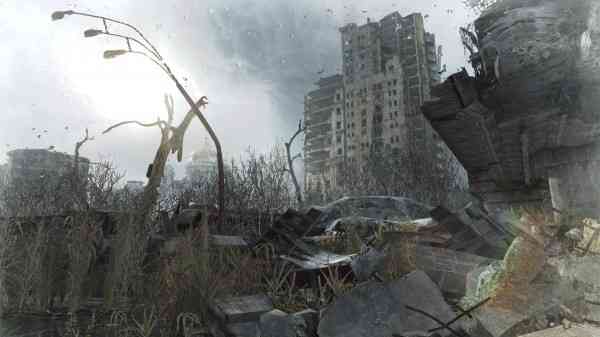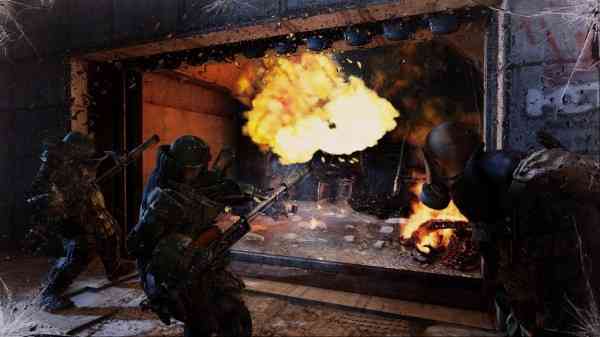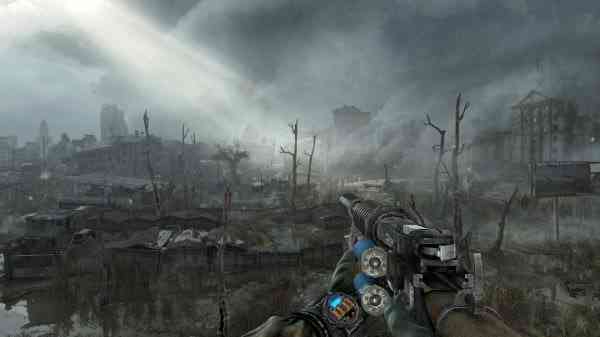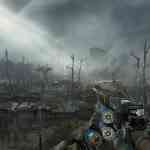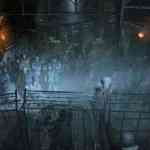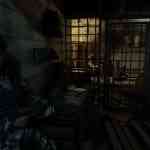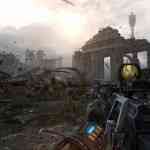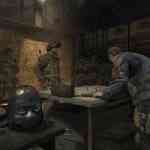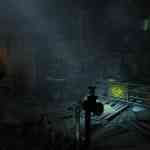When Metro 2033 arrived on the scene back in 2010, without much hesitation I gave it a positive review. The immersive storyline, solid visuals and overall sound package stood out for me and I walked away having enjoyed my experience with the game. Sure it wasn’t exactly ‘game of the year’ material but it was pretty darn close. Yet despite the high praise, Metro 2033 never really turned into a smash hit in the sales department. It did, however, generate a cult-like following and in the end the game sold over 1.5 million copies, which by all accounts is not too shabby. Three years later a sequel arrives with a little more buzz, and with that I sense there is a little more anticipation as well. For me Metro: Last Light is easily one of my most anticipated games of the year. Can this sequel build on solid foundation and deliver an unforgettable experience? Well, there is no question developer 4A Games have managed to address some of the shortcomings from the previous Metro game and Last Light is indeed a step in the right direction. It is undoubtedly a good game, but I still managed to experience a few setbacks and in the end I found these issues dampened some of the overall experience for me.
Before I get too ahead of myself I feel it is I should give you some background information. Metro 2033 was based on the popular Eastern European cult novel of the same name from Russian author Dmitry Glukhovsky. Glukhovsky also wrote the sequel, Metro 2034; however, Metro: Last Light bears little relation to the second book. Yet the game does take place about a year after the events in 2033 and features the books main character Artyom. In Last Light the world has been devastated by an apocalyptic event that wipes out almost all of mankind and turns the world into a poisonous radiated wasteland. Those that survived took refuge into the depths of the Moscow underground subway system. Over twenty years later an entire generation has been born and essentially raised below ground in Moscow’s metro subway system. Each stop along the miles and miles of subway tracks has its specific culture with its own views, ideologies, and agendas. Yet the people in the Metro are not ‘happy campers’ and they are in fact struggling to survive.
To make matters worse, many below the surface, including animals, have been exposed to the poisonous radiation that fills the skies and this has subsequently turned those who have come into contact with it into deadly mutants who stalk those that live in the underground Metro. Resources are limited and surviving factions are not only fighting monsters from the surface and catacombs, but they are also fighting against one another for the precious remaining resources. The games main hero, Artyom, struggles with some of the decisions he made in the first Metro game (sorry I can’t spoil the first game for you by getting into some of those decisions) and is doing everything he can to make sense of the chaos. In a sense, he is humanity’s “Last Light” in what is the Citizens of the Russian Metro’s darkest hour.
Overall, the storyline and atmosphere is every bit as polished as the original Metro game. I found the narrative powerful and it easily immerses you into the game. In some ways the story carries the game and makes up for many of Last Lights shortcomings. The characters are every bit as interesting and while some of the Russian accents are not as believable as the others, the dialogue between the characters is captivating. Additionally, the in-between level narrator (Artyom’s voice) does a fabulous job keeping you up to speed with what is going on and how Artyom is coping on his journey. Much like any other FPS single player campaign, there are some twists and turns along the way but the complexity and layers of depth offered up in Last Light’s plotline is decent and it managed to keep me thinking about the game well after I put the controller down.
Last Light is a linear FPS experience; however, in addition to the games immersive storyline the varied combat, exploration and some mild creepy survival horror elements manage to spice things up enough so that you never get too bored with what is going on in the game. Granted some of the games cut-scenes can drag a bit and I felt some of the sequences in the game were too guided, but by in large I enjoyed what the Last Light single player experience had to offer.
Just like Metro 2033, Last Light is strictly single player experience and will take you anywhere from 10 to 12 hours to complete. There are three difficulty modes, including a “Ranger” mode for some of your more hardcore FPS gamers. In terms of the overall gameplay style, you will find that you’ll spend the majority of the time blasting both mutant and human enemies travelling from one underground environment to the next. Every so often you have to scoot on up to the surface, but rest assured most of the action takes place below ground. It has a similar look and feel as Metro 2033 but Last Light does have many distinguishing features that separate it from the original game as well.
For starters the degree of exploration offered up the game is impressive. Given how resources are so limited, the game encourages you to look for such things like ammunition, gas filters, health, knives, explosives and any other items that assist in getting from point A to point B. There are also notepads that you can collect in the game that give you more information and insight into the games characters and story. I never found myself seeking out or even reading many of them for that matter; however, it is a nice option for those that want to dive deeper into the background of those in the Metro: Last Light world. During the first half of the game the scarcity of ammo never really holds you back from progressing along. Nevertheless, as you progress past the half-way point and encounter packs of nasty abominations, your ammo runs out quickly so in the end you will benefit from taking your time to search every nook and cranny in the game.
In terms of the games combat, those stealth-like sequences from Metro 2033 make a return where you will have to unscrew light bulbs or blow out lanterns, creep around staying out of the light, and take enemies out silently with your knife. Don’t worry though as there are other sequences that have you entering a room (or two) with ‘guns a blazing’ until everyone is dead. There are also some unique segments where you fend off giant mutated wolves as you are screaming down a track in a makeshift railway car and other sequences where you will have to blast away giant swamp fish while they are trying to hop aboard your raft. At the end of the day it is some entertaining stuff and manages to keep you guessing from one level to the next.
One thing that I did not feel was fully realized was the survival horror elements of the game. Sure walking into a dark catacomb, looking for fuse box with gnarly looking giant mutated spiders hatching from giant eggs was creepy, but I never found myself jolting from my chair like I have in other games like Dead Space or Silent Hill. I never seemed to experience those moments were the hairs on the back of my next were standing. Additionally, I did find some of the combat sequences in the game repetitive and frustrating. There are just a few too many chokepoints where you have to fend off waves of enemies as you wait for the game to allow you to proceed. These enemies will not give you time to re-load and Artyom is not exactly fleet of foot, so sprinting away from some of these creatures is not a viable option. It can be incredibly frustrating at times and well just a little a too mind numbingly repetitive.
I should also mention I ran into a nasty little glitch which occurred shortly after falling into a radioactive swamp. When I restarted from the previous checkpoint, the game spawned me back into the swamp and underwater where I could not move my character. I was stuck. Only after I restarted the game from a previous chapter could I carry on with my journey. This was not a deal breaker by any means but certainly an annoyance that I hope is patched when the game hits retail shelves.
Last Light’s approach when it comes to weaponry also strays from the existing tactics so many other FPS games take. Many of the weapons in Last Light have been “designed and built” by the people of the underground. In Metro 2033 these weapons were not as accurate or calibrated like those weapons built in the pre-apocalyptic world. In Last Light, while the weapons remain ‘homemade’ they are much more refined and smoother than they were in Metro 2033. I have to admit, I was somewhat disappointed with this. While I certainly appreciate that my gun is now more accurate, some of that realism experienced in Metro 2033 is lost a little in Metro: Last Light. It is not a major issue but something that fans of the previous game will certainly notice.
Visually, Last Light is a sharp looking game and much better looking than I could have possibly imagined. The level of detail in this post-apocalyptic world is stunning. Everything from the cracked pavement to the dynamic weather, the developers did a wonderful job in the graphics department to the point where you could almost mistake the Xbox 360 version of the game with the PC version of the game. The subway system itself is alive and I found myself wanting to explore every nook and cranny as I marveled how not one detail was overlooked. As you navigate your way through tight corridors and abandoned subway stops, the level design is incredible. Even when you jump up to the surface, the level of detail is fantastic. Character and enemy design is also spot-on and easily on par with other ‘Triple A’ shooters already on the market. The in-house graphics engine does a great job and it is something that should make PC and console gamers alike quite happy.
The audio in Last Light is yet another highlight to the game and all the sounds included make for an engrossing experience. First off, some of those familiar sounds and music from the original Metro game return. Granted, the music is somewhat melancholy and dreary, but it is perfectly suited for a game where characters have nothing left. It is memorable and instantly took me back to those feelings I had when I played the original Metro game back in 2010. The voice acting utilized throughout the game’s story is also pretty well done too. A gigantic part of Metro: Last Light is the narrative that unfolds and the voice actors do a fabulous job conveying the storyline. For those who really want to get immersed into the experience, you can also play the game with Russian voice acting turned on and English subtitles displayed at the bottom. I preferred the English version with Russian accents; however, the Russian dialogue is a nice and rare option nonetheless.
Although Metro: Last Light does have a ‘been there and done that’ feeling to it, this is not a bad thing as developer 4A Games has managed to smooth out all the rough edges from the first Metro game. Last Light’s sprawling mix of shooter, combat, stealth, survival horror and exploration all manage to do the job, but the visuals and story-driven narrative in many ways steals the show. This is not to say that the actual gameplay itself is not enjoyable because it is; I just found that some of the issues I experienced along the way somewhat dampened the game a bit. Regardless, the varied combat, short focused levels and many of the surprises along the way, including a lap dance of all things, made for an unforgettable experience and one Metro fans and fans of FPS games alike can purchase with confidence.
